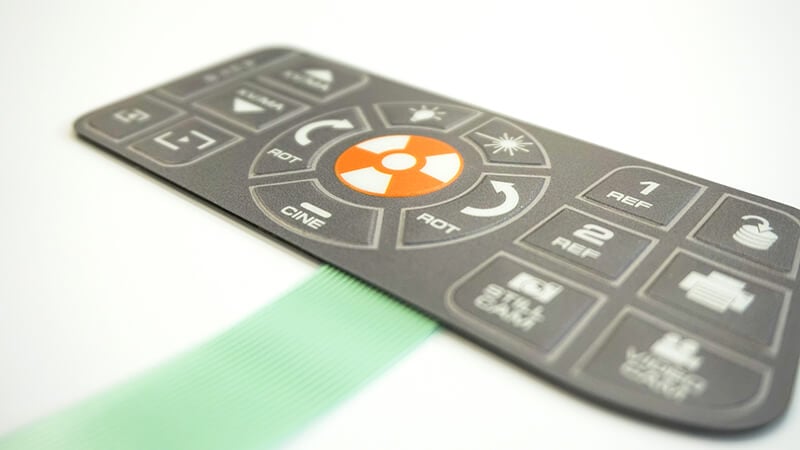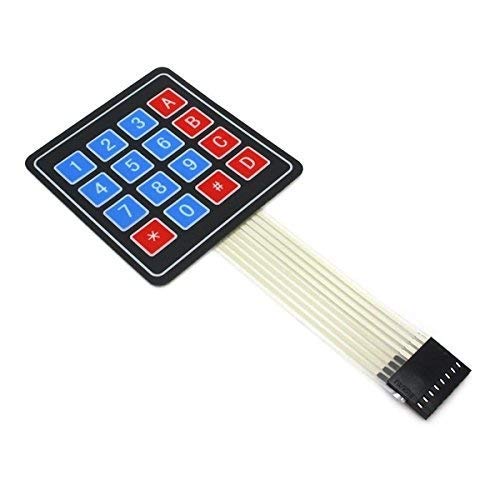Understanding Membrane Layer Switches: The Trick to Sturdy and Trusted Controls
Membrane layer changes represent a crucial facet of modern user interface layout, blending capability with resilience in numerous applications. As we discover the intricacies of membrane buttons, it ends up being clear that their function in enhancing control systems is both extensive and complex, raising questions regarding just how finest to leverage their capabilities in future innovations.
What Are Membrane Layer Buttons?
Membrane buttons are an innovative option in the realm of customer interface innovation, integrating functionality and style perfectly. These devices function as a user interface between customers and electronic systems, incorporating several components into a small layout. Typically constructed from flexible, slim layers of products, membrane switches are designed to respond to touch, allowing individuals to interact with machinery and electronic tools properly.
The main components of a membrane layer button include a printed circuit layer, graphic overlay, and a spacer layer that protects against unexpected activation. The visuals overlay can be customized to show brand identification or user preferences, boosting aesthetics while guaranteeing functionality. Membrane buttons are frequently used in various applications, including clinical gadgets, customer electronics, and commercial tools, owing to their toughness and resistance to environmental variables such as dampness and dirt.
Among the essential benefits of membrane switches is their capacity to stand up to wear and tear, making them perfect for high-traffic settings. Furthermore, they are lightweight and call for very little room, permitting for innovative layouts in product advancement. Generally, membrane layer changes stand for a reliable and useful choice for modern-day digital user interfaces, weding technology with user-centric layout principles.

Just How Membrane Changes Job
The operation of membrane switches over joints on an easy yet reliable system that translates user input right into digital signals. When an individual presses the switch, the leading layer flaws, enabling a conductive aspect in the circuit layer to make call with a corresponding conductive pad on the bottom of the visuals overlay.
The layout of membrane buttons can differ, but they often integrate domes or tactile aspects to offer responses to the user, improving the overall experience. The materials used in membrane layer switches, such as polyester or polycarbonate, add to their sturdiness and resistance to environmental variables, consisting of wetness and dirt. Furthermore, the published circuits are typically enveloped, which shields them from damage over time.

Advantages of Membrane Layer Buttons
Among the main advantages of membrane switches is their adaptability in layout, enabling them to be tailored to meet certain individual needs and aesthetic demands. This flexibility reaches numerous industries, where different shapes, dimensions, and shades can be utilized to improve user interaction and aesthetic allure.
Furthermore, membrane layer buttons are understood for their sturdiness. Created from durable materials, they are immune to dirt, moisture, and physical wear, which significantly prolongs their life-span compared to typical mechanical buttons. This longevity makes them particularly suitable for high-traffic atmospheres and applications requiring longevity.

Furthermore, membrane switches provide a streamlined profile, bring about a thinner layout that can be incorporated right into different tools without adding mass. This feature not only improves the aesthetic allure but additionally adds to an extra ergonomic item design.

Applications of Membrane Layer Buttons
Easy to use and flexible, membrane layer buttons locate applications across a large range of sectors, consisting of medical tools, consumer electronics, and industrial tools. In the medical area, these switches are important to gadgets such as analysis devices, client tracking systems, and infusion pumps, where reliability and convenience of cleaning are crucial. Their capability to withstand severe environments and maintain functionality makes them optimal for such applications.
In consumer electronics, membrane layer switches are made use of in products like microwaves, washing makers, and remotes - membrane switch. Their streamlined style permits user-friendly interface, enhancing the total user experience while providing toughness and resistance to wear and tear
Commercial equipment additionally benefits from membrane layer switches, specifically in control panels for machinery and automation systems. These buttons use protection against dirt and wetness, making sure regular efficiency in tough settings. Their personalized functions permit makers to tailor them to particular functional requirements, improving efficiency and capability.
Picking the Right Membrane Switch
When choosing a membrane layer switch, it is necessary have a peek here to consider various elements that affect efficiency and viability for specific applications. The primary factors to consider include environmental problems, tactile comments, durability, and design requirements.
First, evaluate the operating setting; switches subjected to moisture, chemicals, or severe temperatures require specific products to ensure long life and performance. Next off, evaluate the demand for responsive comments. Depending upon user interaction, some applications may benefit from a tactile response to confirm activation, while others may favor a non-tactile style for visual reasons.
Sturdiness is an additional critical aspect; membrane layer buttons ought to be made to endure regular use, impacts, and abrasion. Make certain the chosen button can sustain the expected lifecycle, especially in high-usage circumstances.
Final Thought
In home verdict, membrane layer changes serve as essential parts in the style of resilient and trusted control systems across various industries. The adaptability of membrane layer switches over enables for tailored services that satisfy certain functional requirements, enhancing their value in modern innovation.
Membrane layer switches stand for a vital facet of modern-day interface layout, blending functionality with resilience in different applications.Membrane switches are an advanced solution in the realm of user interface technology, integrating performance and style perfectly. Typically constructed from versatile, slim layers of products, membrane layer buttons are made to react to touch, making it possible for individuals to engage with equipment and electronic tools properly.
The layout of membrane buttons can differ, but they frequently include domes or tactile aspects to offer responses to the individual, improving the general experience.In conclusion, membrane layer changes serve as necessary parts in the layout of long lasting and trusted control systems across various markets.